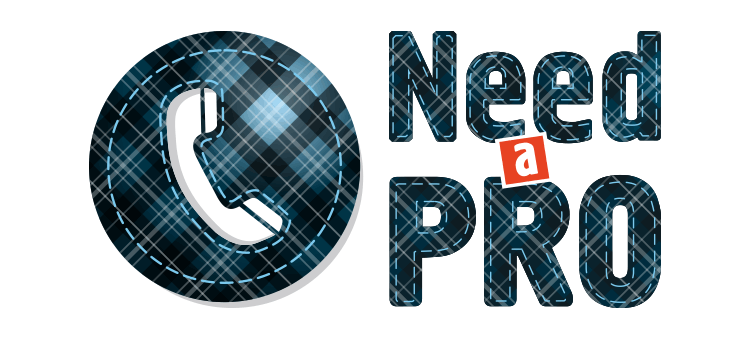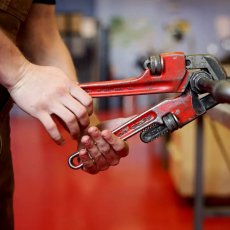Australia House, home to the Australian Embassy (which we show since its interior was also used as "Gringotts," the wizarding bank in the first Harry Potter film).
How to contact your home consulate in London if you need citizen services (like a new passport application)
Remember: Embassies are for diplomats; Consulates are the citizens-services offices most visitors might need—for lost passports, visas, and the like.
Note that many consulates require appointments—and even if not, an appointment will make the interminable bureacratic wait much shorter.
Also, security tends to be, understandably, strict. Leave at your hotel all bags, backpacks, oversized purses, knives, glass bottles, laptops, cameras, and anything else that would raise eyebrows in an airport security–type situation. (Many also insist you keep your cellphones in your pocket or purse when on the premises.)
Foreign consulates in London
United States: American Citizen Services, 24 Grosvenor Square (at Upper Brook St.), W1K 6AH. Open Mon-Fri 8am–5pm. (tel. (0)20-7499-9000; London.usembassy.gov). Tube: Marble Arch (Central), Bond Street (Jubilee, Central).
Note: In 2017, the US Embassy is expected to move to its new home in the Nine Elms district near Battersea Park, across the Thames from Pimlico.
Canada: Canada House, Trafalgar Square (west side, at Pall Mall —visitor's entrance on Cockspur St.), London, SW1Y 5BJ. (tel. (0)20-7004-6000; Canadainternational.gc.ca). Tube: Charing Cross (Bakerloo, Northern).
Australia: Australia House, The Strand (where road splits at Aldwych), London WC2B 4LA. Open Mon-Fri 8am–4pm (appointments by phone only 9am–noon). (tel. (0)20-7887-5816; Uk.embassy.gov.au). Tube: Temple (Circle, District).
New Zealand: New Zealand House, 80 Haymarket (near Pall Mall), London SW1Y 4TQ. Open Mon-Fri 10am–4pm. (tel. (0)20-7968 2730; Nzembassy.com/united-kingdom). Tube: Charing Cross (Bakerloo, Northern) or Picadilly (Picadilly, Bakerloo).
South Africa: Consular section/Passport services: 15 Whitehall St. (just S of Trafalgar Square), London SW1A 2DD. Open Mon-Fri 8:45am–12:45pm. (tel. (0)20-7925-8900, Southafricahouseuk.com). Tube: Charing Cross (Bakerloo, Northern).
Passports
The global ID card—and, technically, the only thing absolutely required for travel abroad
When it comes down to it, you really only need three things to travel to a foreign country:
Plane ticket
Clothing
Passport
(Money also helps.)
A valid passport is the only legal form of identification recognized around the world. Your driver's license ain't gonna cut it out in the U.K. Abroad, it only proves that some U.S. state lets you drive (though you will need one to rent a car).
Getting a passport is easy—all it takes is two photos of yourself, some government forms, and $135—but it takes some time to complete the process.
Note: This page details how to get a passport for U.S. citizens. If you hail from another country, use the list in the "Useful Links" section (of Google) to find the site of your local equivalent to the State Department or Foreign Office to get the details.
Make sure you start the paperwork at least six to ten weeks in advance of your departure. The official word is that it will take "approximately 6 weeks"—and it will, in reality, probably only take 3-4 weeks—but don't tempt fate. (There are ways to expedite it—for a fee; more below).
This process involves showing up in person at a Passport Acceptance Facility (which includes many major post offices, some libraries, courthouses, and other government buildings; the list is at travel.state.gov). You cannot simply apply for a passport by mail.
Since all the current details on how to apply for a passport are so readily available on-line, there's little reason for me to rehash it all here—just go to the excellent State Department site (travel.state.gov) and it'll walk you through the process. But here are a few useful pointers:
You'll need two identical passport-size photos (2" X 2"), which you can have taken at any photo shop, most major chain drug stores, and at many post offices that offer passport application services (call ahead to be sure). Note: You cannot use the strip of pictures from one of those photo vending machines.
You'll need to bring proof of U.S. Citizenship. This usually means a previous passport or a certified birth certificate with both parent's full names (not a photocopy, but a certified copy and a registrar's seal—usually raised or embossed—and signature; you can order one from the state in which you were born). If you are a citizen but were not born in the U.S., you can bring a Consular Report of Birth Abroad, a Certification of Birth, a Naturalization Certificate, or a Certificate of Citizenship. Note you must also bring a photo ID, so if you don't have an old passport, you must bring a driver's license or equivalent (military ID or other government-issued photo ID).
When you go to apply for your passport, bring two checks. For reasons known only to the federal bureaucracy, you have to fill out two separate checks (one is an Application Fee, the other an Execution Fee). Silly? Of course. Still, its impossible to argue with the federal government: just bring two checks.
You'll be given a choice of a Passport Book, and Passport Card, or both. What you want is the "Passport Book." This is the traditional, old school passport. The "Passport Card" was essentially designed as a low-cost alternative ($55 versus $135) for truckers and others whose business constantly takes them back and forth across the border with Mexico or Canada (though it is also valid for Bermuda and most Caribbean countries, so it is used by some cruisers and snowbirds who don't bother traveling anywhere else). You cannot use a Passport Card to go to Europe, Asia, South America, Africa, or anywhere else besides the U.S., Canada, Mexico, and the Caribbean. It is, therefore, pretty pointless.
What if I need a passport in a hurry?
It can take up to 6 weeks to get your passport. That's all the government will promise (actually, they don't even promise that; they simply state it as a ballpark).
In practice, it usually only takes about 3–4 weeks (I once got a renewal passport just two weeks after dropping off the forms), but don't count on it arriving sooner than six weeks.
Also, go ahead and pay the roughly $20 for overnight delivery service.
There are three ways to get a passport faster:
You can pay the government a $60 expedite fee and they'll try to get the passport to you in 2–3 weeks.
You can pay for an expedite service like RushMyPassport.com , where fees start at $99 to get a passport in 12 business days. The fee goes up which goes up depending on how soon you need it. (Note that those prices are just for the fast service; you still have to pay the government fees for the passport itself.):
10–12 business days - $99
6–9 business days - $169
3–5 business days - $249
2 business days - $299
1 business day - $349
If is a life-or-death emergency, the government can get you a passportin 24–48 hours, but you have to apply in person at a Passport Agency (there are only 25 of those in the country) and bring poof of the emergency.
What to do once you have your passport
Make three photocopies of your passport (the open page with all the personal data, not the cover). This is the main item on your backup info sheet (along with other IDs, the numbers to call if you lose your credit cards, etc.). Keep one copy with you at all times—separate from the original—another copy hidden in your bag somewhere, and leave the third copy at home with a trusted friend or neighbor who can fax it to you in case of emergency. » more
Keep your passport with you at all times securely in your money belt. The only times to give it up are at borders for the guards to peruse (this includes giving it to the conductor on overnight train rides), when any police or military personnel ask for it, and briefly to the concierge when you're checking into your hotel (see next).
Hotel front desks will often want to keep your passport overnight. They have to register you with the police, and they like to pile all the passports in a drawer until the evening so they can do all the guests' slips at once. Smile and ask politely whether they can do their paperwork on the spot or at least let you come by in 15 minutes or so, after you check into your room, freshen up, and are on your way out to hit the town. I always tell them I need it to go exchange money at the bank, whether I'm flush with cash or not.
If you lose your passport on the road, go directly to the nearest U.S. consulate (usembassy.state.gov). Do not pass go, do not collect £200. Bring all forms of identification you have, and they'll get started on generating you a new passport. Needless to say, this is a hassle that should be avoided at all costs. Again: carry your passport in a moneybelt at all times.
Bags & luggage
How to travel with a carry-on-sized bag as your only piece of luggage—and still have room for souvenirs
Our favorite carry-on sized bags from eBags.com
eBags Mother Lode TLS Weekender Convertible
Porter 30 Travel Backpack
Venturesafe X30 Anti-Theft Adventure Backpack
TLS 22" Convertible Wheeled Carry-On
Tugo Large Travel Backpack
SOC Gear Bugout Bag - 600 Denier Poly-Canvas
What kind of luggage should I get for Europe?
The best all-around luggage choice is—brace yourself—a carry-on-sized backpack.
Either go with one with a built-in zip-off daypack, or carry a separate small backpack.
Hard-backed suitcases are cumbersome and heavy, huge frame packs are for hikers, and both need to be checked on airlines—a wholly unnecessary hassle.
With a carry-on-size pack, you can hop on and off the plane, sling your stuff on your back whenever you need to hoof it, and it’ll force you to pack light.
“Carry-on size” is determined by each airline individually, but is always measures by adding together all the dimensions (length plus width plus height).
Note that for many lately it has been slipping from the old 60" to around 45" total, so when shopping for a bag make sure it fits those smallest requirements. That way just about any airline will O.K. it.
(Hint: With soft-sided bags, you can get away going over by a few inches, since you can squish them into acceptable-looking dimensions.)
Gear & clothing links
Changing money
How to exchange your dollars for pounds at the best rates (and lowest fees) possible
First things first: How much is a British pound worth?
Currently (mid-2017), US$1 equals 77p; or £1 equals US$1.25.
The daily rate fluctuates, obviously, generally ranging between 75 and 80p to the dollar, and $1.19 to $1.28 to the pound. (Brexit negotiations will likely make the pound less stable and more prone to fluctuations for the foreseeable future.)
OK, now on to how to get your hands on some pounds.
How to change money in the U.K.
Always exchange money at a bank, and always use your ATM card to withdrawal pounds from your home bank account. This is how you will get the best rates and pay the lowest fees or commissions.
If you're in a pinch and need to exchange dollars or traveler's checks from your emergency stash, again: do it at a bank, and read the information below to ensure you get the best deal.
Businesses emblazoned with "Exchange! Cambio! Wechsel! Change!" are exchange booths, and all of them—from venerable Thomas Cooke offices all the way down to the shady guy who hangs around the bus station—offer a worse rate and/or higher commission than banks and should only be used in emergencies.
That's really all you need to know. If you want to know why this is the best advice, dust of your math hat and continue to read on for some dry, but important, technical stuff about exchange rates and commissions. (For more on rates—which is even more boring than the commissions stuff we're about to discuss—scroll down.)
Shopping for the best deal: Rates, commissions, & fees
Let's say, for whatever reason, you aren't using your home bankcard to get money out of a local bank's ATM (I reiterate: that is the fastest, cheapest way to get money abroad), and instead you need to exchange cash or traveler's checks for pounds. Now you need to find the best deal out there.
Most banks display a chart of the current exchange rates they're offering, either in the street window (these days digital and constantly updated) or on a sheet of paper taped up at the international teller's window inside. Make sure you're looking at the rate the bank is buying, not selling, U.S. dollars or whatever your home currency is (if, as usual, there are two columns of numbers next to each currency, the "buy" column is the lower amount).
When comparing rates bank to bank, what you want is the bank whose chart shows the highest number in the "buying dollars" column. This will be the best rate. However, unless you’re using the ATM, you must also factor in the commission fee. Sometimes this is a flat rate equal to a few dollars; sometimes it's a percentage (anywhere from 1% to 10%) of the amount being exchanged.
Occasionally, a slightly less attractive exchange rate coupled with low or flat fee commission can cost you less in the long run than a great-looking rate that's hiding a whopping commission in the fine print. Of course that depends on how much you change. Yes, this is going to involve doing math on a foreign street corner in two currencies.
Warning: On the rare occasion that someone approaches you on the street with a rate too good to be true, it is. That shyster's got black market currency, and if his bills aren't counterfeit, his sleight-of-hand method of counting them out certainly is. Also, you can get arrested.
Demystifying Exchange Rates
The current exchange rate (in mid-2017) is 1.25. That means it costs US$1.25 to buy £1 (conversely, US$1 is worth 77p). The lower this number, the better the exchange rate for you, since it means it costs you less to buy each British pound.
The pound has historically been quite a bit more valuable than that (over the past few decades, on the order of 1.7 to 1.9), but the Brexit vote in summer 2016 severely dented the nation's currency rating.
Now all those numbers represent the official interbank rate, which is what most newspapers print in their business sections. However, this only represents how much it costs banks to exchange money with each other—and it's a rather better rate than you'll ever get.
Other papers, especially in travel sections, print the rate (2% to 4% below the interbank rate) you're likely to receive when exchanging money. When you exchange cash or a traveler's check, you generally get a rate that is 4% "worse" than the interbank rate. This is known as "+4%." It is also known as a "rip-off." If you exchange at any agency besides a bank, you'll probably do even worse.
On top of this, any place will charge you a commission—either a flat fee (in which case changing a lot of money at once is cheaper) or a percentage of the total changed (in which case you're bleeding needlessly no matter how much or little you change).
Luckily, in the past few years computerized banking has ridden in on its white overcharger to save the day—or at least a few bucks for you. If you bypass the outdated and outmoded traveler's checks and steer clear of dealing with actual people, you can shave a few percentage points off. It’s called an ATM, and it works just like it does at home. If you take money out of a cash machine—either using your own bankcard linked to your personal checking account, or with a cash advance on a credit card—you will get that favorable interbank rate. » more
Or at least, you should. In reality, you often don't. You get about 1% to 2% below that prime rate—still better than exchanging cash or traveler's checks, but not the best possible. Luckily, for now, most European banks do not charge that "ATM usage" fee that almost all U.S. banks have jumped on to nickel and dime us to death a bit more.
But if your home bank charges you for withdrawals from ATMs that are "out of network" (and yes, the U.K. is waaay out of network)—and its usually a steep $1 to $4 fee each time—you're still paying a commission of sorts. » more
I actually shopped around for a bank that doesn't do this (the online bank Ally, which also refunds any fees charged by the ATM itself), so they are out there. Credit unions are also usually a good bet. » more
Even with all that, using an ATM linked to your checking account is, for now, the cheapest way to get money, and paying cash is the cheapest way to travel (outside of using credit cards).
Renting a car in the U.K.
Hints, tips, resources, and pointers for getting your own set of wheels in England
There is a lot to recommend renting or leasing a car in the U.K., especially if you want to go beyond just the big cities (and you should). It's the only way to really get in there and visit all the little villages, prehistoric sites, colorful fishing towns, isolated beaches, and countryside B&Bs that make up the British trip of your dreams.
I love trains, and no-frills airlines make crossing great distances in Europe fast and cheap (albeit thoroughly unromantic). But sometimes, only your own set of wheels will do. Here's how to go about getting them.








 Vectora Design
Vectora Design